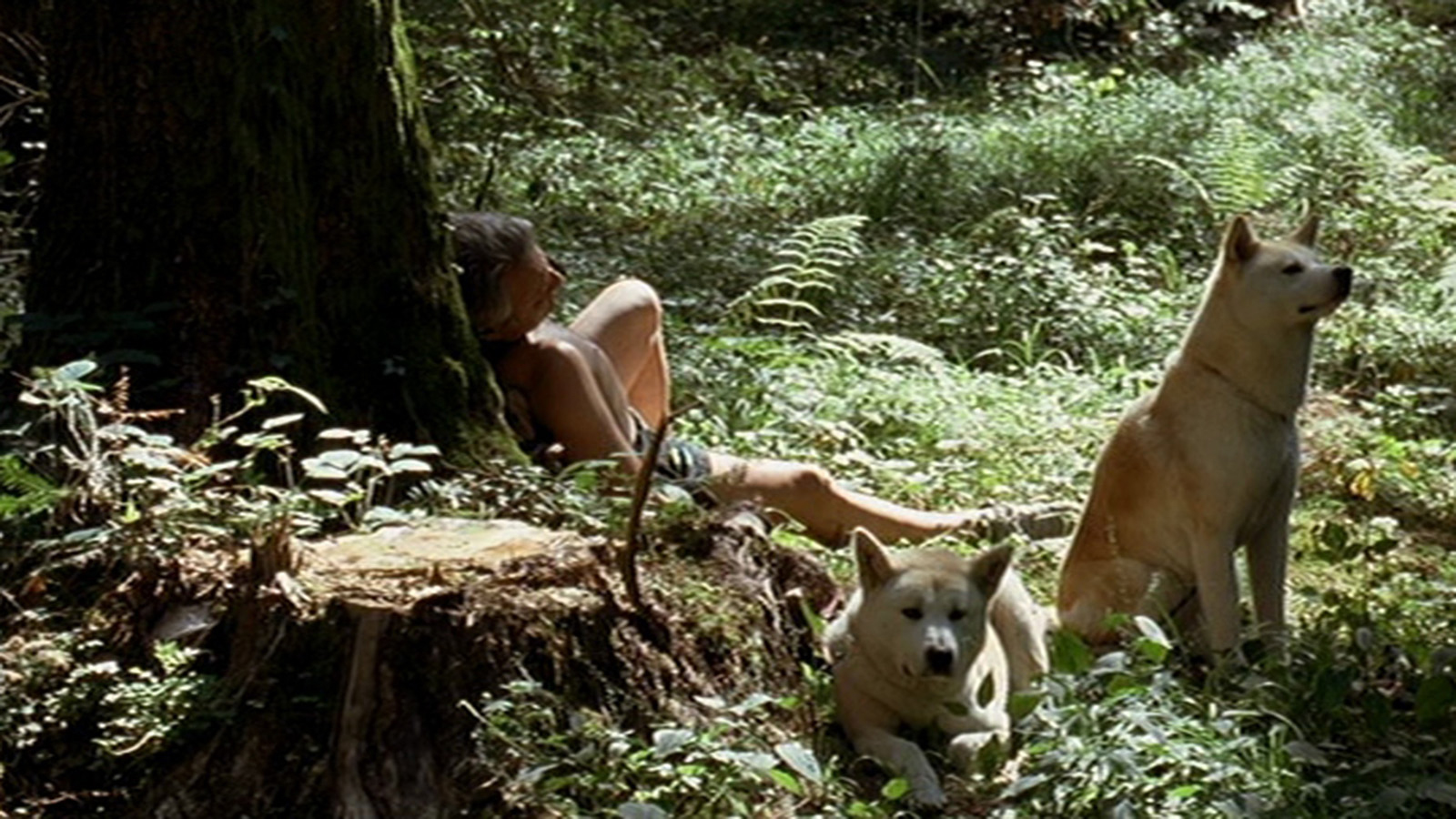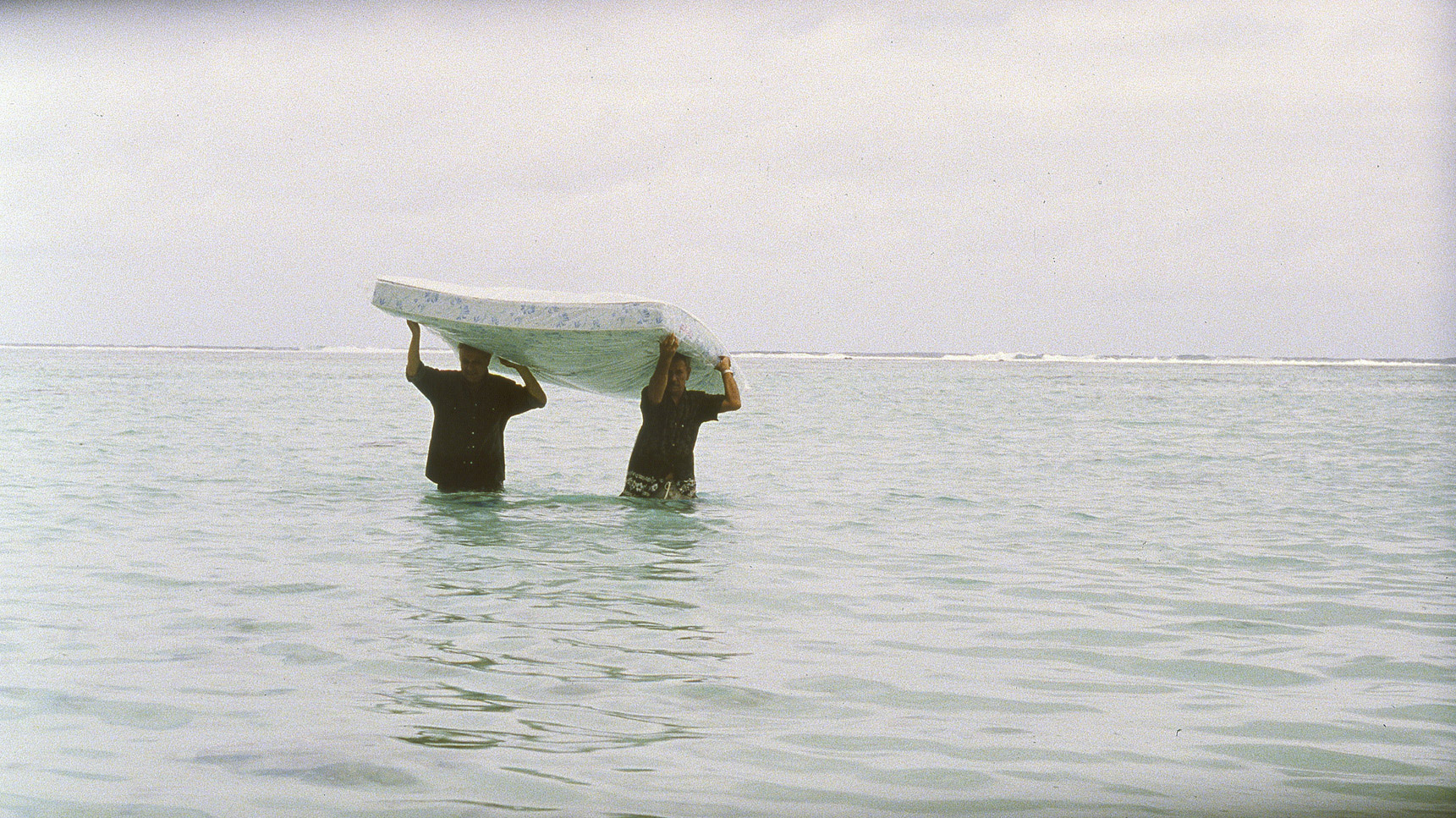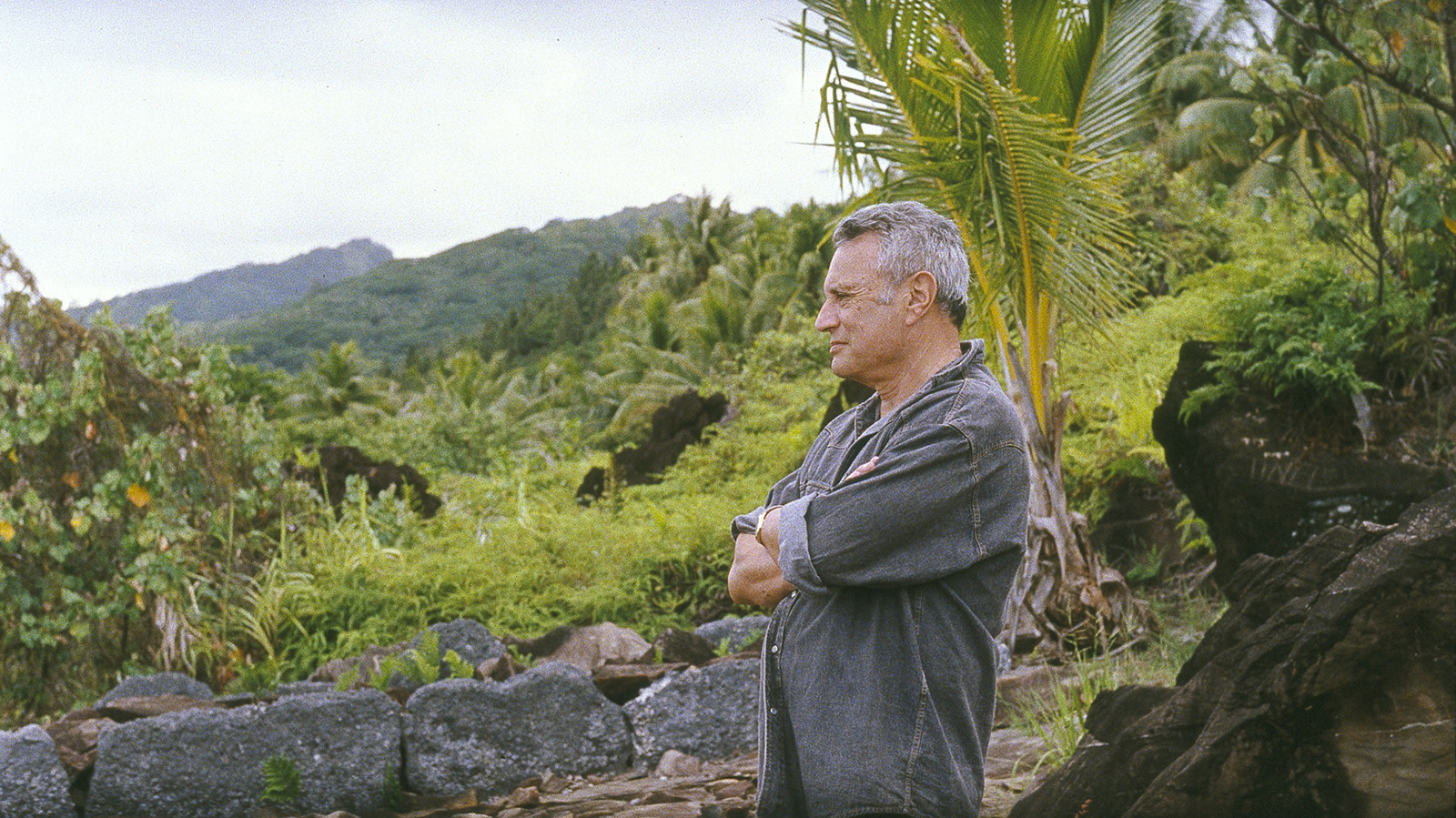 Erika Balsom
Erika Balsom
In Claire Denis’s 2004 film, the pleasures and dangers of
boundary violation.

Michel Subor in L’intrus. Courtesy Metrograph.
L’intrus, directed by Claire Denis, available to watch via Metrograph beginning March 26, 2021
• • •
“One emerges from this adventure lost. One no longer knows or recognizes oneself: but here these words no longer have meaning. Very quickly, one is no more than a slackening, floating strangeness, suspended between poorly identified states, between sufferings, incapacities, lapses.” Here, philosopher Jean-Luc Nancy describes his state of being following treatment for lymphoma, a cancer that took hold of his immunocompromised body in the aftermath of a heart transplant. But he could easily be writing about the form of Claire Denis’s L’intrus (2004), the film inspired by his short book of the same name. Denis’s enigmatic eighth feature is her most challenging. It drifts and baffles. A synopsis might call it the story of Louis Trebor—an aging man, played by Denis regular Michel Subor, who is haunted by a mysterious past and seeks to buy his way out of coronary troubles, into a new life—but only at the risk of ascribing to the film a lucid simplicity that it refuses at every turn. Denis herself offers a better encapsulation, echoing Nancy’s experience of disorientation: “L’intrus is like a boat lost in the ocean.” So it is. Far from a weakness, though, the errancy of this vessel is inextricable from its exhilarating force, one that hits as hard in the gut as in the head.

L’intrus. Courtesy Metrograph.
The film is not an adaptation in any traditional sense, even when compared to the loose engagement with Herman Melville’s Billy Budd that shapes Denis’s superlative Beau travail (1999). Its gesture is of a sort found more frequently in contemporary-art commissions than in cinema: it is a creative response to an existing work, less a derivation than a dialogic extrapolation. In his L’intrus, published in book form in 2000, Nancy attends to the fleshy strangeness of receiving a donated organ. The autonomy of his body has been breached; what had seemed to most fully belong to him was now inhabited by foreignness. The integrity of the “I” falters. Buoyed by the heart’s easy slippage from sanguineous muscle to emotional metaphor, Nancy thinks outward from his surgery, unfolding the idea of intrusion in broad terms: its ambivalence, the power it has to both incite a desire for unity and deny that possibility. The transplant emerges as a microcosm of a generalized condition, showing up the ruse of all fantasies of invulnerability and purity—something with special resonance in our time of contagion, when every day spent in isolation, every mention of vaccination, is another reminder of the body’s permeability and heterogeneity.
In her L’intrus, Denis dispenses with any reference to Nancy’s life circumstances, save for making her protagonist the recipient of another’s heart. Picking up on how the philosopher shuttles between the physical and the metaphysical, as well as on the flexibility of intrusion as a concept, she crafts an expansive reflection on the pleasures and dangers of boundary violation, threading together diverse instances in which self and other, inside and outside, cease to be neatly separable. Working across bodies and territories, as she so often does, she finds compromised frontiers in sex, parenthood, migrancy, and the psyche. Human and animal, past and present, life and death, dreams and waking life: in L’intrus, every threshold is there to be crossed.

Michel Subor in L’intrus. Courtesy Metrograph.
There is a story lurking in all of this: Trebor’s heart trouble, his tenuous relationship with his two adult sons, his journey from a hut in the Jura to a shipyard in Busan via a luxurious Geneva, then onward to another hut in Tahiti, before taking to the waves again. But such intrigue is secondary to Denis’s exquisite orchestration of motifs and sensations. Only frustration awaits anyone hoping to learn anything about the source of Trebor’s wealth, exactly what he was doing abroad, or the nature of his relationship with the witchy, fur-clad keeper of dogs played by Béatrice Dalle (around whom the feral perfume of cannibalism lingers, a remnant of her appearance in Denis’s Trouble Every Day, 2001). Why waste time searching for narrative cohesion when it’s clear Denis is playing at another game entirely?

Béatrice Dalle in L’intrus. Courtesy Metrograph.
L’intrus pushes to an extreme something found across the director’s body of work: with the help of cinematographer Agnès Godard’s impeccable eye, it stays close to the muddle of bodies and objects in ways that break with conventional hierarchies of significance. Seemingly momentous events, like a murder, come and go in a hallucinatory flash. So much of what might typically be accorded paramount importance here falls into the obscure abyss of the cut. Don’t worry, just let it go. Concentrate instead on a baby’s strange, shifting countenance held in close-up, the glorious movement of multicolored streamers as they unfurl without hurry, the purple depths of sea and sky that wash over the screen, or the team of dogs that bounds across snow to the sound of a single-note guitar refrain. None of it is gratuitous. To name it so would be to evaluate the film in relation to a sad standard—an economy of efficiency and legibility, a subordination of visuality to story—that is thankfully not its own.
L’intrus is better watched with the attention to form and openness to invention that one would accord an experimental film. Denis takes “intrusion” as a sheaf that somewhat holds together a range of scattered events and locations and as a guiding principle of construction. The elliptical opacity that prevails throughout is crucial evidence of the latter: Denis builds her film by grafting together fragments that resist assimilation to a homogenous whole. They keep their untamed, dislocating alienness. Near the conclusion, excerpts from Paul Gégauff’s Le reflux (1962), featuring a young Subor in Polynesia, pierce Denis’s film; at its heart (metaphor intended) is the thought of another, Nancy. This seductive work is replete with incursions of otherness, to the point that the distinction between what intrudes and what is intruded upon flounders. And this seems to be the point, if one can speak of such a thing. L’intrus relinquishes the tidiness of perfection to offer a kind of thinking in images that is exemplary of what cinema can do at its most daring. It reminded me of two very important truths: the coherence of the self is an illusion and coherence in film is overrated.
Erika Balsom is a Reader in Film Studies at King’s College London. Her book on James Benning’s TEN SKIES (2004) will be published in June by Fireflies Press as part of its Decadent Editions series.